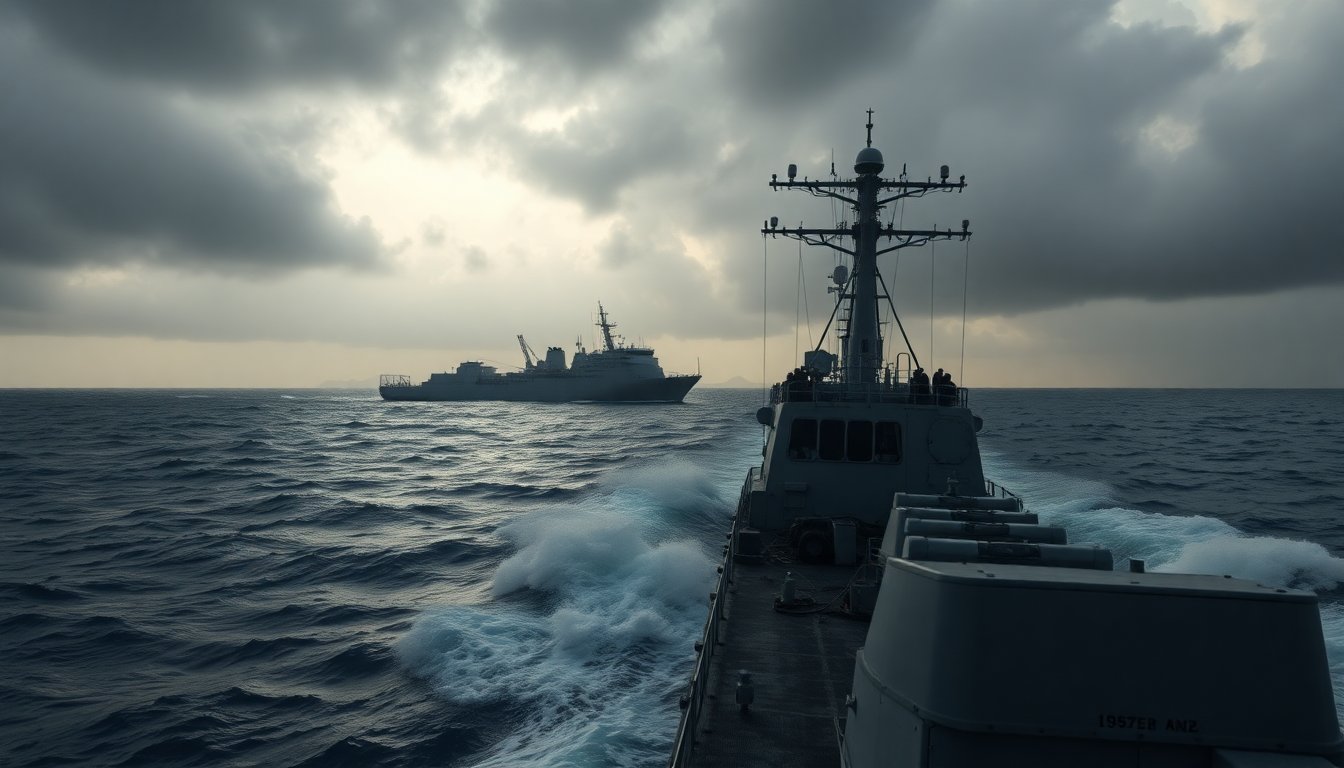Table of Contents
The facts
On a Friday morning, a significant maritime incident occurred in the Yellow Sea, highlighting the ongoing tensions between South Korea and North Korea. South Korean military forces took action after a North Korean merchant vessel crossed the Northern Limit Line (NLL), a disputed boundary between the two nations. This incident represents the first breach of the NLL by a North Korean ship in three years, emphasizing the fragile peace in the region.
The facts
UPDATE AT 5 a.m. local time: A North Korean vessel entered disputed waters near Baengnyeong Island, according to South Korean military officials. The ship lingered on the southern side of the maritime boundary for about one hour, advancing up to 5 kilometers south of the Northern Limit Line (NLL). In response, the South Korean Joint Chiefs of Staff (JCS) issued warnings through broadcasts and fired a series of warning shots to compel the vessel to retreat.
Military response and protocols
The Joint Chiefs of Staff (JCS) released a statement detailing their military response, which adhered to established operational protocols. Following the firing of warning shots, the North Korean vessel retreated from the area, leaving South Korea’s maritime control zone. At the time of this incident, South Korean naval forces were conducting operations in the vicinity, reflecting the heightened state of alert in these contested waters.
Context of ongoing tensions
This maritime incident unfolds amid increasing diplomatic activity, as North Korea’s Vice Foreign Minister Kim Son-gyeong is set to attend the 80th United Nations General Assembly in New York. The contrast between diplomatic engagement and military tensions underscores the complex dynamics between the two Koreas.
North Korea has not yet released a public statement regarding the recent breach. The Joint Chiefs of Staff (JCS) reaffirmed their commitment to maintaining a robust state of readiness against provocations, emphasizing their determination to protect the Northern Limit Line (NLL).
Historical significance of the NLL
The Northern Limit Line has been a source of controversy since its establishment after the Korean War, which occurred between 1950 and 1953. While recognized as the de facto maritime border, North Korea contests its validity, asserting that their maritime boundary extends further south. Tensions have escalated multiple times in recent years due to violations of this line, resulting in confrontations that sometimes have tragic consequences.
In 2010, North Korean artillery bombarded a South Korean island, and that same year, a South Korean navy vessel was allegedly torpedoed, resulting in the loss of 46 sailors. These incidents illustrate the ongoing potential for conflict in the maritime areas of the Korean Peninsula.
The facts
This latest incident underscores the fragile security situation in the region. How both sides will manage these tensions remains uncertain. The South Korean military’s decisive response highlights a broader strategy aimed at deterring incursions and asserting control over disputed waters. Future interactions are expected to be shaped by diplomatic initiatives and military preparedness.
North Korean leader Kim Jong Un recently condemned the Northern Limit Line (NLL), calling it “illicit and lawless”. This statement adds further complexity to ongoing discussions regarding maritime borders. As geopolitical dynamics shift, both North and South Korea face the challenge of addressing historical grievances while seeking stability in a region marked by uncertainty.


